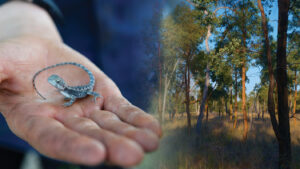While things have been quiet lately, Bimblebox is still being talked about. We’d like to share this feature article that we’d written, recently published in the online journal of the National Parks Association of Queensland Inc. (https://npaq.org.au/saving-bimblebox/). It’s a good summary, and we have added an update for you.
Saving Bimblebox
The history of Bimblebox Refuge began when the almost 8,000 hectare Glen Innes Station, 95% uncleared, was bought in 2000 by a group of concerned citizens and nearby landowners.
In recognition of its high conservation values, the Federal Government wanted the property to be part of the National Reserve System of Protected Areas, and contributed two-thirds of the purchase price.
A legally binding Agreement over Bimblebox Nature Refuge ‘in perpetuity’ was then signed with the QLD Government in 2003.
Bimblebox became an ongoing research base for long-term science projects, notably from Queensland Herbarium. It offers a rare example of property management with a strong focus on biodiversity conservation in co-existence with cattle production.
Located in the Desert Uplands, a Biodiversity Hotspot, but where less than 5% of the area is held in conservation reserves, it is a treasure-house of flora and fauna, with 176 bird species identified already.
But in 2007 came the shock that Waratah Coal wanted to develop a massive open cut and underground thermal coal mine on Bimblebox. 2008 saw exploratory drilling begin, and Clive Palmer become the owner of Waratah Coal.
After the major tasks of responding to an EIS and SEIS, in late 2013, Bimblebox supporters learnt that the Galilee Coal Project (aka China First Mine) was approved by State and Federal Governments (approval is viable until 2073). Since then, land clearing around Bimblebox has continued.
In 2014 the Bimblebox Alliance Inc. (TBA) was established as it had become clear that a formal alliance of Bimblebox supporters would be needed to combat this biggest threat to Bimblebox and other areas of high conservation and cultural values – the approval of mine developments and related infrastructure.

Under the Queensland Nature Conservation Act 1992, Nature Refuges can be mined and offset to ‘compensate’ for the loss of significant ecological resources if economically viable coal reserves are found. This contravenes the guidelines of the International Convention on Biological Diversity treaty which advises no mining of IUCN Class VI Protected Areas where such values would be impacted, or offsetting in such areas which are protected for perpetuity.
The threat loomed, but there was no further action from Waratah Coal until late 2019, when they applied for a Mining Lease and Environmental Authority.
Represented by the Environmental Defenders Office, TBA lodged notice of objection in the Land Court. Our co-objectors are Youth Verdict, especially concerned with the Human Rights of young people, considering coal’s role in climate change. Waratah Coal applied to have the Human Rights objections struck out, but the Land Court rejected that (28.8.2020).
Update: We had expected to be in Court by May 2021; since then it seemed February 2022 was likely. Now, with EDO – and thus TBA – dealing with various legal eventualities, and proposals under discussion, we are unsure of how the matter will proceed. TBA will update our supporters as soon as we do know.

